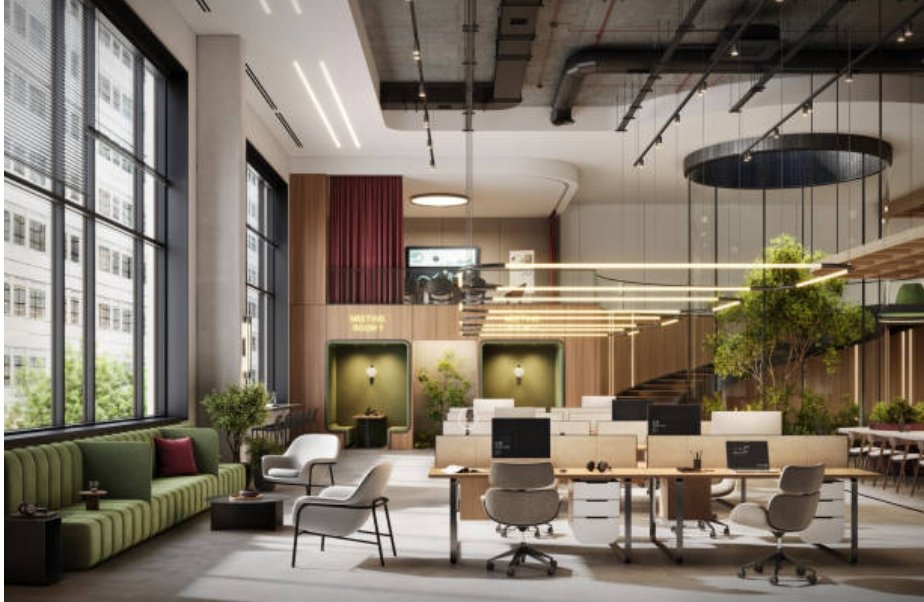
Lighting plays a vital role in interior design—not only shaping the look and mood of a space but also influencing how functional and comfortable it is. Well-planned lighting enhances ambiance, adds visual interest, and ensures a space supports daily activities. This guide explores the main types of lighting and how to use them effectively to craft a well-lit, inviting interior.
Main Types of Lighting in Interior Design
1. Ambient Lighting
Definition:
Ambient lighting provides general illumination for a room. It ensures the space is safely and evenly lit, allowing for comfortable navigation and use.
Common Sources:
Ceiling fixtures, chandeliers, recessed lights, and track lighting.
Design Tip:
Install dimmer switches to adjust brightness levels, allowing you to shift the atmosphere to match different occasions.
2. Task Lighting
Definition:
Task lighting is focused light designed to support specific activities like reading, cooking, writing, or working on a computer.
Common Sources:
Desk lamps, under-cabinet lights, and pendant lights over kitchen counters or islands.
Design Tip:
Position task lights to reduce glare and prevent shadows. The goal is to provide targeted light that enhances productivity without causing eye strain.
3. Accent Lighting
Definition:
Accent lighting highlights specific features such as artwork, architectural elements, or indoor plants. Its purpose is to draw visual attention and add depth.
Common Sources:
Track lights, wall-mounted fixtures, and directional spotlights.
Design Tip:
To be effective, accent lighting should be at least three times brighter than the surrounding ambient light to create contrast and emphasis.
4. Decorative Lighting
Definition:
Decorative lighting acts as both a light source and a design element. These fixtures serve as visual focal points in a space.
Common Sources:
Statement chandeliers, artistic lamps, and unique sculptural lighting pieces.
Design Tip:
Select pieces that align with your room’s style, color palette, and overall theme. These fixtures should enhance—not overwhelm—the room’s design.
Creating a Cohesive Lighting Plan
A well-balanced lighting scheme integrates multiple light types to fulfill both practical needs and aesthetic goals. Consider the following strategies when designing your lighting:
Layer Your Lighting
Combining ambient, task, and accent lighting adds dimension and flexibility. Each layer serves a distinct purpose, but together they create a dynamic and functional environment.
Consider Color Temperature
Color temperature greatly influences the atmosphere of a room.
- Warm white (2700K–3000K): Soft and cozy, perfect for living rooms and bedrooms.
- Cool white (3500K–5000K): Bright and invigorating, best suited for kitchens, bathrooms, and workspaces.
Use Lighting Controls
Incorporate dimmers and smart lighting systems to adjust brightness and mood throughout the day. These controls improve convenience, enhance comfort, and reduce energy usage.
Select Fixtures That Fit the Space
Choose lighting that complements your interior design:
- Modern spaces: Opt for sleek, minimalist designs.
- Traditional settings: Consider more ornate and classic fixtures.
Lighting with Style: Union Lighting & Decor
At Union Lighting & Decor, lighting is more than functionality—it’s a key part of home styling. Their curated collections offer options for every aesthetic, whether you’re outfitting a sleek city loft or a timeless family home. With expert guidance available, clients can develop personalized lighting solutions that combine style with smart functionality.
Lighting is not just a necessity—it’s a design statement. The right lighting transforms your home, making it more beautiful, comfortable, and truly yours. With trusted partners like Union Lighting & Decor, you can bring your vision to life and craft a space that reflects your taste, lifestyle, and personality.